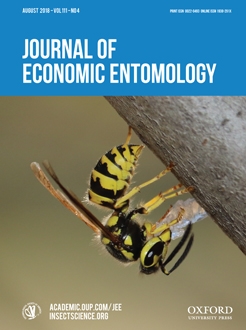Dominic D. Reisig, Anders S. Huseth, Jack S. Bacheler, Mohammad-Amir Aghaee, Lewis Braswell, Hannah J. Burrack, Kathy Flanders, Jeremy K. Greene, D. Ames Herbert, Alana Jacobson, Silvana V. Paula-Moraes, Phillip Roberts, Sally V. Taylor
Journal of Economic Entomology 111 (4), 1824-1833, (16 April 2018) https://doi.org/10.1093/jee/toy106
KEYWORDS: Bacillus thuringiensis, Cry1Ac, Cry2Ab, Cry1F, Vip3Aa
Evidence of practical resistance of Helicoverpa zea (Boddie) (Lepidoptera: Noctuidae) to Bt cotton in the United States is debatable, supported with occasional reports of boll damage in the field. Our objective was to provide both empirical and long-term observational evidence of practical resistance by linking both in-season and end-of-season measurements of H. zea damage to pyramided Bt cotton bolls and to provide Cry1Ac diet-based bioassay data in support of these damage estimates. In-season boll damage from H. zea was highly correlated to end-of-season damaged bolls. Across North Carolina, Bt cotton fields with end-of-season bolls damaged by H. zea increased during 2016 compared to previous years. Elevated damage was coupled with an increase in field sprays targeting H. zea during 2016, but not related to an increase in H. zea abundance. Bioassay data indicated that there was a range of Cry1Ac susceptibility across the southeastern United States. Given the range of susceptibility to Cry1Ac across the southeastern United States, it is probable that resistant populations are common. Since H. zea is resistant to cotton expressing pyramided Cry toxins, the adoption of new cotton varieties expressing Vip3Aa will be rapid. Efforts should be made to delay resistance of H. zea to the Vip3Aa toxin to avoid foliar insecticide use.

